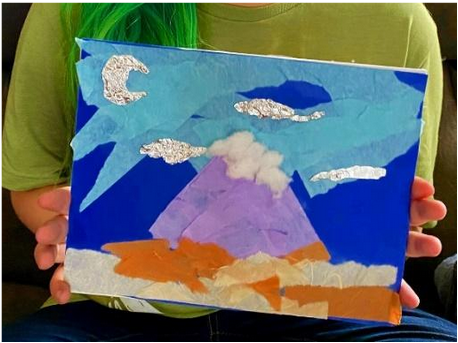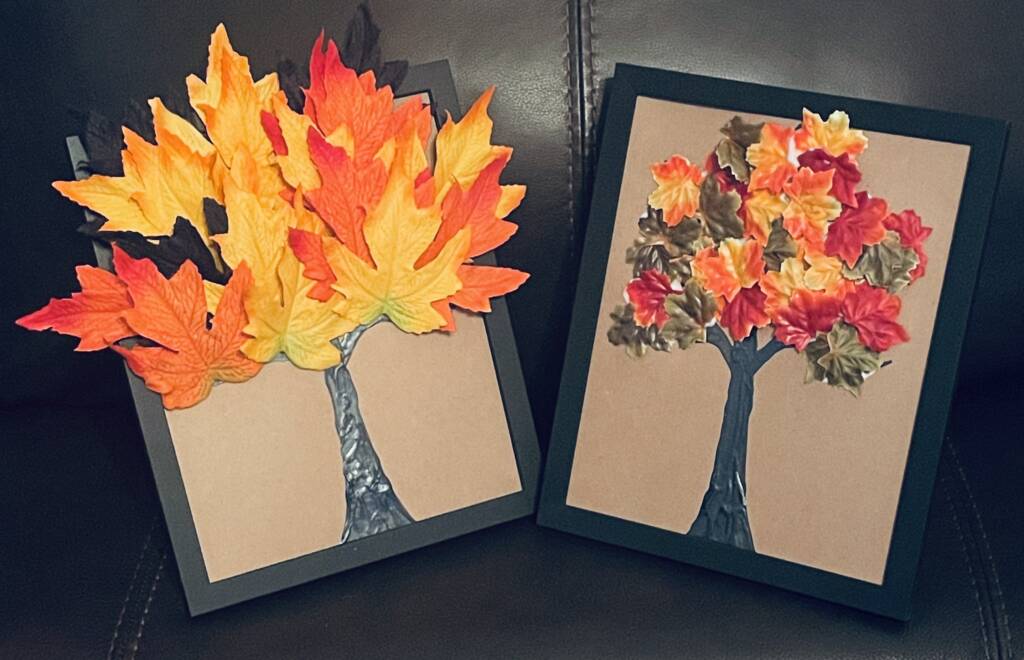Visual arts classes provide a unique challenge for students with visual impairments, particularly students with Cerebral/Cortical Visual Impairment (CVI). Creating a 2-dimensional representation of a 3-dimensional object can be demanding, therefore it is crucial that Teachers of the Visually Impaired (TVIs) and classroom art teachers implement appropriate accommodations for students with CVI. Let’s take a look at why students with CVI should take art, and how we can best accommodate their needs.
Why should students with CVI take art class?
As a former art teacher and current TVI, I feel disheartened when a student seems reluctant to participate in art class. There are myriad ways visual art can support concepts and skills presented in a student’s core curriculum. Drawing strengthens comprehension of tactile graphics and can help students understand the conversion of objects to symbols.

Painting and drawing also aid in the development of fine motor skills, hand eye coordination, and the perception of spatial relationships. Progress in these skills aside, visual art provides a distinct opportunity for self-expression. Students with CVI deserve the option to convey their thoughts and feelings alongside their peers.
Strengths and Challenges
Several of the elements and principles, which all art lessons are based on, can be accessible for students with CVI. Color, texture, and contrast are three examples. Each can be relative strengths for some students with CVI. Students may incorporate a preferred color to structure a drawing or painting, or use texture (ex. thickened paint) to access the art tactually. Contrast is also generally understood and used by students with CVI, as they are familiar with its advantages in their classroom work.

Other elements/principles can be a challenge for students with CVI, such space and balance. In an image with a landscape, a student may need support in understanding that the plants are in the foreground, the lake is in the middle ground, and the mountains are in the background.

In the image above, the black cat and black monkey are working to balance the image like this Frida Kahlo portrait. Students who are impacted with simultanagnosia may not be able to view both creatures at once and may need support in understanding how the artist has created a visually balanced painting.
Chuck Close: Portrait Artist with CVI

Chuck Close is one of the most well-known modern American artists. He created beautiful, large-scale portraits. Ironically, Chuck Close had what he referred to as “face blindness”, otherwise known as prosopagnosia. Prosopagnosia is a neurological condition characterized by difficulty in recognition of human faces, and is one of many possible manifestations of CVI. In an episode of the Radiolab podcast, Close described how his prosopagnosia drove him to attempt to memorize the human face, which he was able to do after capturing it in a photo and reproducing it in a painting. He was unable to recognize a 3-dimensional human face in motion (moving, talking, etc.).
Close created his paintings using a signature process. He took a photo of the subject, printed it in large scale, and drew a diagonal grid over the photo. He then looked at each diamond shape individually and painted the diamond’s color values in an abstract, tiny painting.
Close explained that he was not able to draw an eye, an ear, or a nose, let alone an entire face.
By breaking down a face into tiny diamonds of color and value, he was able to depict a human face. His process is an incredible example of an artist’s creation of an accommodation for his specific form of neurodivergence.
Here is an up-close example of his grid process

Adaptations: How can we make it accessible?
There are many ways to make the visual arts more accessible for students with CVI. First and foremost, start with the student and look at what implications and accommodations came up in their most recent CVI evaluation! Many of my students are able to tell me what works for them. Brainstorm with your student on what can be done to make an assignment easier to access. Perhaps your student is still developing the skills to understand what works best for them. In that case, the following tips may provide suggestions for you to use with your student.
- Visually simplify the assignment. Is the class drawing a still life with 7 objects? Have the student set up their own still life with one or two objects.
Think this and not this


- For drawing, use highly familiar and recognizable objects. Many students with CVI can recognize objects more easily if they have had direct, repeated exposure to them.
- Some students might benefit from a lightbox. A photo can be placed on top of the lightbox and the student can place paper over the photo to trace outlines. Many art teachers discourage tracing (understandably!). However, for students with CVI, having an outline can provide the confidence necessary to be more expressive in other elements of the piece (like color choice, media, etc.).
- Encourage the student to feel the object before drawing.
- Adapt the assignment from 2-D to 3-D. Are the students expected to draw a mug? Maybe your student creates one from clay, wire, kinetic sand, etc.
- Create tactile drawings using glue, wiki sticks, textured paper, etc., like the following examples:

- Lastly! It is critical to carefully consider what the art teacher is teaching. Is the lesson about pattern? Create a tactile drawing using repeating shapes cut from tactile paper. When topics get trickier to address, like value, try to think outside of the box. Value can be created by adding differing amounts of water or sand to paint, so that the student can feel the value rather than see the saturated or diluted color.




